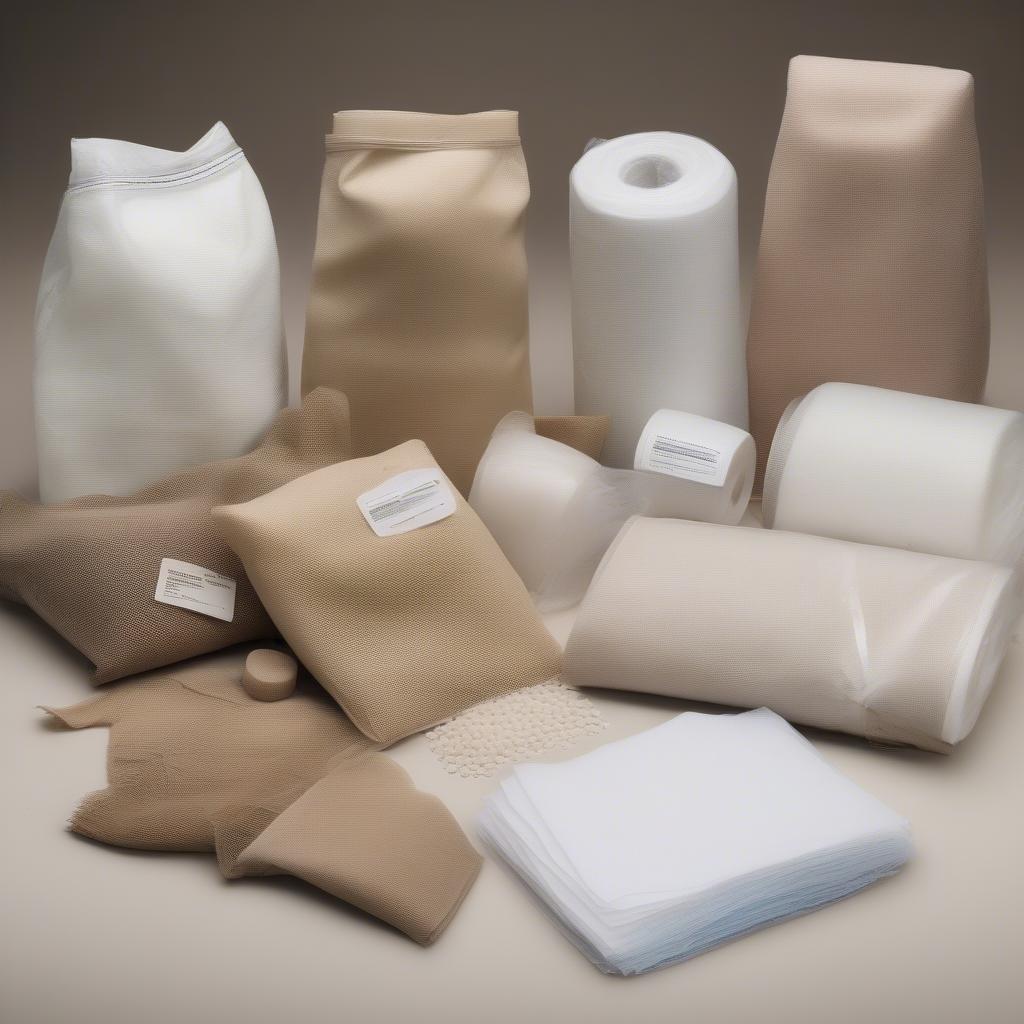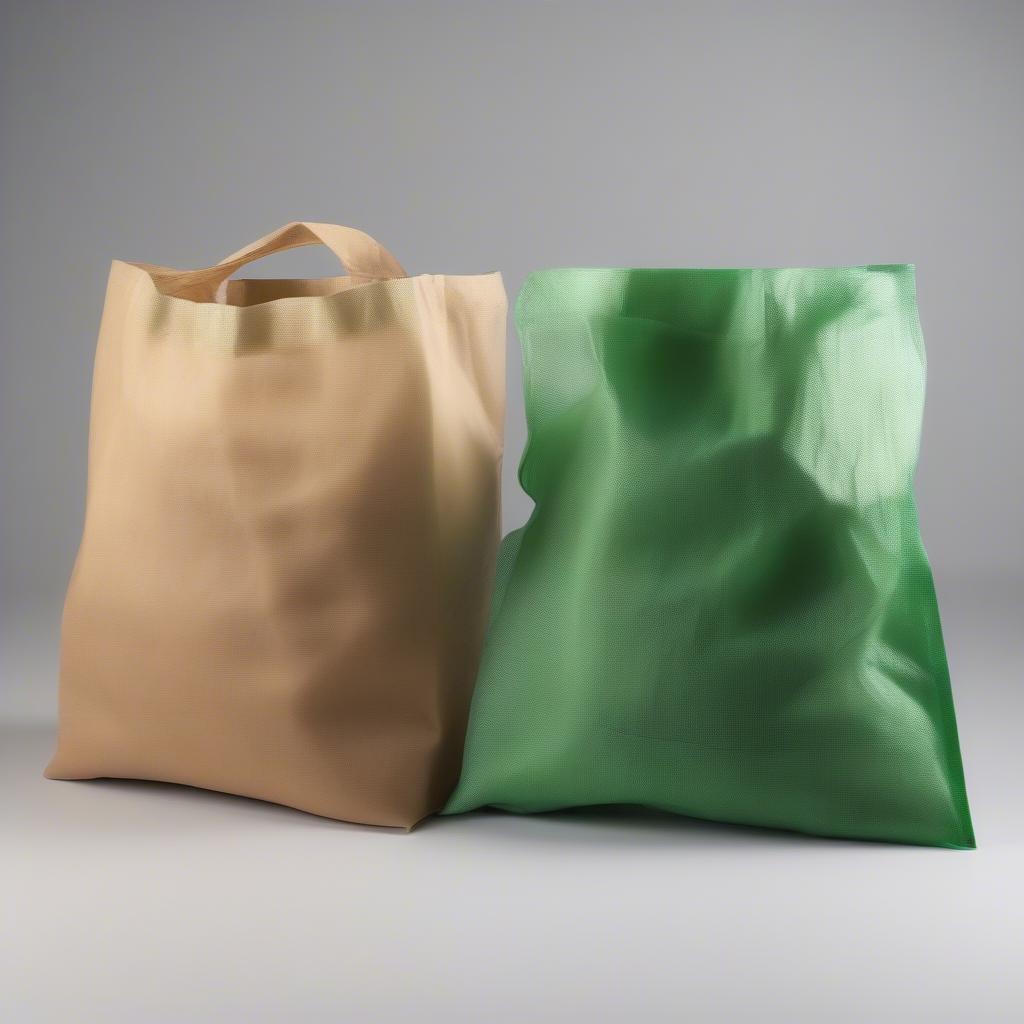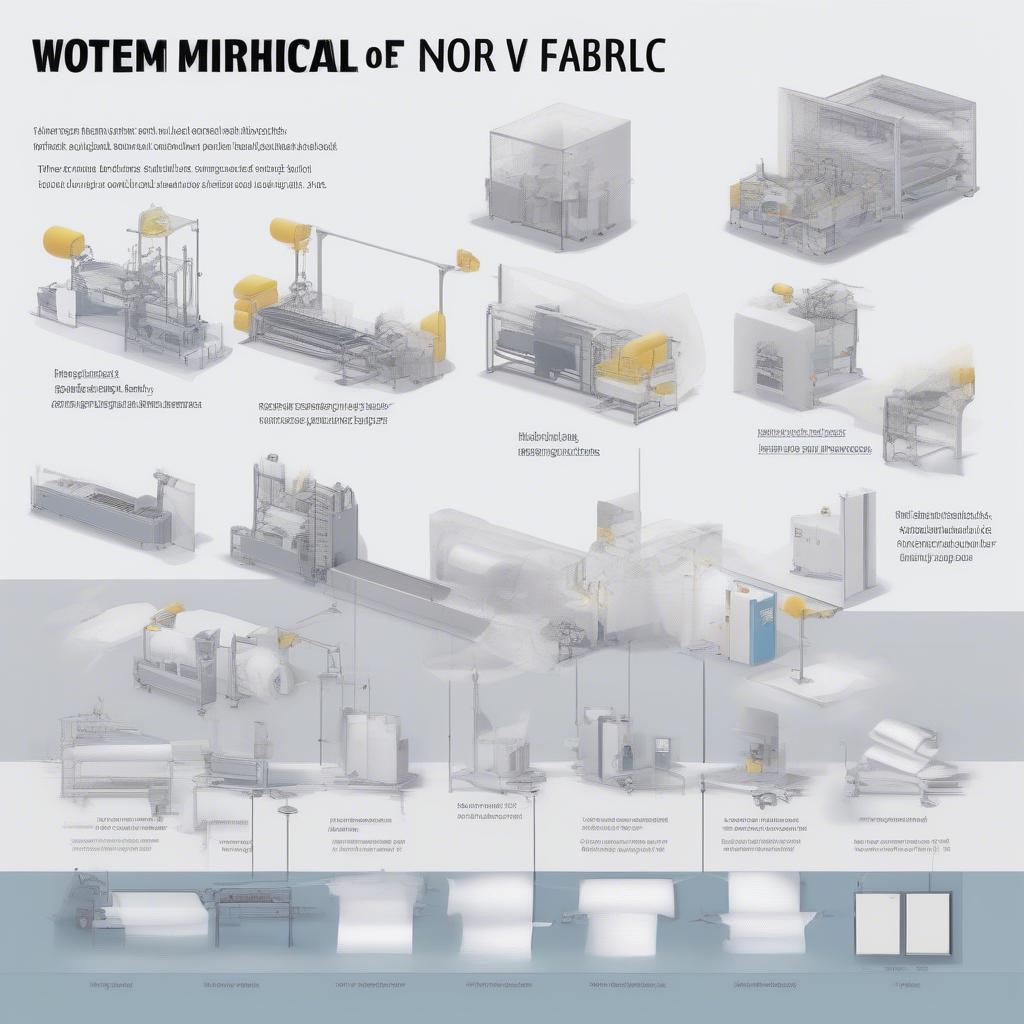Woven Bag
Raw Material for Non Woven Bags: A Comprehensive Guide
Raw Material For Non Woven Bags plays a crucial role in their durability, functionality, and environmental impact. Understanding the different materials, their properties, and applications is essential for making informed choices. This guide explores the world of non-woven bag materials, from the ubiquitous polypropylene to more sustainable alternatives.
 Non-woven bag raw materials: polypropylene, polyethylene, polyester, PLA, and bioplastics
Non-woven bag raw materials: polypropylene, polyethylene, polyester, PLA, and bioplastics
Exploring the Most Common Raw Material for Non Woven Bags: Polypropylene
Polypropylene (PP) reigns supreme as the most widely used raw material for non-woven bags. Its popularity stems from its strength, lightweight nature, and resistance to moisture and chemicals. These qualities make PP bags ideal for carrying groceries, promotional items, and even heavier goods. It’s also relatively inexpensive, making it a cost-effective choice for large-scale production.
What makes PP so versatile? Its unique molecular structure allows it to be easily molded and spun into fibers, creating a durable, non-woven fabric. raw material of non woven bags often includes various additives to enhance specific properties, such as UV resistance or colorfastness.
Is Polypropylene Eco-Friendly?
While PP offers numerous advantages, its environmental impact is a growing concern. As a petroleum-based plastic, it contributes to the depletion of fossil fuels. However, PP is recyclable, which can mitigate some of its environmental footprint.
What’s the lifecycle of a PP bag like? A PP bag can be recycled multiple times, though its quality degrades with each cycle. Ultimately, it can be incinerated for energy recovery, though this process still produces emissions. Increasingly, manufacturers are exploring biodegradable additives for PP to make it more environmentally friendly.
Delving into Other Raw Materials for Non-Woven Bags
Beyond polypropylene, several other materials contribute to the diverse world of non-woven bags. Polyethylene (PE) offers excellent flexibility and tear resistance, making it suitable for heavier items. Polyester (PET) is known for its strength and wrinkle resistance, often used for reusable shopping bags.
Bioplastics: A Sustainable Solution?
Bioplastics, derived from renewable resources like corn starch or sugarcane, represent a promising alternative to conventional plastics. Polylactic acid (PLA) is a common bioplastic used for non-woven bags. It’s compostable under specific industrial composting conditions, offering a more sustainable end-of-life option.
 Biodegradable non-woven bags made from PLA
Biodegradable non-woven bags made from PLA
What are the pros and cons of bioplastics? While bioplastics offer a significant environmental advantage, they can be more expensive than conventional plastics. Their compostability also requires specific conditions not always readily available. non woven carry bags raw material are evolving to incorporate more sustainable options.
Understanding Non-Woven Fabric Production
Non-woven fabrics are created by bonding fibers together through mechanical, thermal, or chemical processes. This process differs from traditional weaving or knitting, resulting in a unique fabric structure.
How are Non-Woven Bags Made?
The manufacturing process typically involves melting the raw material, extruding it into fibers, laying the fibers into a web, and then bonding the web into a fabric. how to screen transfer a non-woven polypropylene bag explores the printing process for customizing these bags. This process allows for a wide range of textures, thicknesses, and strengths to be achieved.
“The choice of raw material directly impacts the final properties of the non-woven bag,” says Dr. Emily Carter, a materials scientist specializing in sustainable packaging. “Understanding these properties is crucial for selecting the right material for the intended application.”
 Non-woven fabric production process
Non-woven fabric production process
Choosing the Right Raw Material for Your Needs
Choosing the appropriate raw material depends on various factors, including the intended use of the bag, budget constraints, and environmental considerations. For heavy-duty applications, PP or PE might be preferable. For eco-conscious consumers, bioplastics like PLA offer a more sustainable option. non woven pvc bag for bedding suppliers demonstrates a specific application of this versatile material. woven beach bag manufacturers offer a different perspective on bag production.
“Consumers are increasingly demanding sustainable packaging options,” adds John Miller, a retail consultant. “Businesses that prioritize eco-friendly materials are gaining a competitive edge.”
In conclusion, understanding the raw material for non woven bags is crucial for making informed decisions. From the versatile polypropylene to the sustainable bioplastics, the choices available cater to a wide range of needs. Considering the environmental impact of your choices is essential for promoting a sustainable future.
FAQ
- What is the most common raw material for non-woven bags? Polypropylene.
- Are non-woven bags recyclable? Yes, many are, especially those made from PP.
- What are bioplastics? Plastics derived from renewable resources like corn starch.
- Why is polypropylene so popular? It’s strong, lightweight, and inexpensive.
- What are the benefits of using PLA for non-woven bags? It’s compostable and derived from renewable resources.
- How are non-woven fabrics made? By bonding fibers together without weaving or knitting.
- What factors should I consider when choosing a non-woven bag material? Intended use, budget, and environmental impact.
Need more help? Contact our 24/7 customer service team at +84 388 951 999 or visit us in Hanoi, Vietnam or Tech Avenue, Suite 12, San Francisco, CA 94105, USA.
